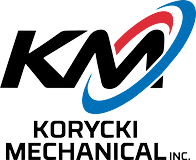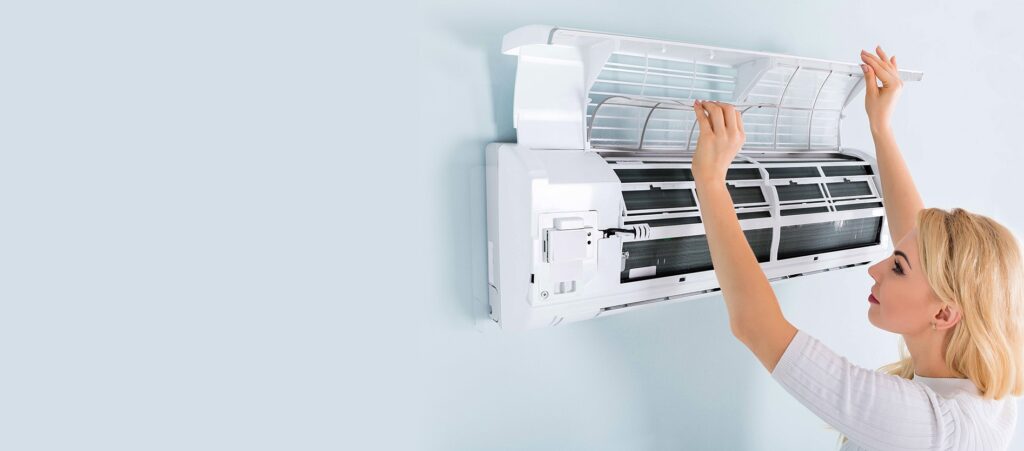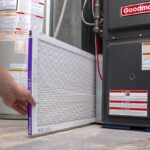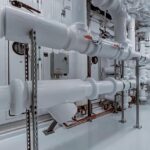Does your home contain an air conditioner? During the summer months, millions of people rely on these cooling systems to survive. As the summer goes on and the temperature keeps going up, people are getting ready to deal with the weather.
While most individuals are focused on purchasing new air conditioning units, tuning their systems, and engaging in air conditioning upkeep, others are coping with AC maintenance and system troubles. As there are numerous air conditioning problems, a unit that fails to cool is among the most bothersome. If your air conditioner is operating, but the temperature is not decreasing, you may feel confused and frustrated. Fortunately, there are several approaches to troubleshooting the problem.
WHY DOESN’T THE AIR CONDITIONER BLOW CHILLY AIR?
There are numerous reasons why your cooling system may be running but not lowering the thermal environment, spanning from simple issues like a malfunctioning thermostat or a blocked filter to more complex scenarios with updated components.
Here are a few things you should verify before calling a professional. For a little more depth, visit our troubleshooting an air conditioner page.
The thermostat is incorrectly set: When you find that your home is growing warmer than usual, you should first check the thermometer settings. Ensure that the temperature is set to cool. If the thermostat is set to cool, verify that the temperature setting has not been altered. If it is off, set to heat, or set to continuous fan (often just labeled “on”), return it to cooling mode. Wait a few minutes following the activation of the system before confirming that cold air is blowing from the registers. If it’s chilly, the issue is resolved! If not, check the air filter, which is the next step in the diagnostic process.
Dirty Air Filter: Your air conditioning system may incorporate an air filter in or near the air handler unit. The filter catches airborne, dust, dirt, and other particles as they enter the air handler unit. It keeps the system’s components clean and running more effectively and can also help keep your home’s air cleaner. A filthy air filter can impede airflow and limit a home’s cooling capacity. In extreme circumstances, it can force the system to shut down entirely.
There may be an air filtration system in or near the air quality handler assembly of your air conditioner. The filter catches soil, dust, and other tiny particles that enter the air handler.
It makes the system’s equipment cleaner and more functional, and it can help keep your home’s air cleaner as well.
A blocked air filter will impede airflow, leading to an overheated home. In extreme situations, it may also cause the device to shut down totally.
If your thermometer is functioning properly but still not receiving cold air, locate your system’s air filter, switch it off, remove it, and test it.
If your cooling system fails to cool your home even after you’ve established that the air filter is in good condition, you’ll need to dig a little further to locate the root of the problem.
The condenser unit is obstructed: As previously mentioned, your air conditioning system includes an outdoor condenser unit. The exterior of the condenser unit contains a big external coil that encircles the unit for the most part. The coil consists of a succession of thin metal “fins” that are closely spaced. Your condenser coil may be clogged or obstructed if your air conditioner is running but not lowering inside temperatures. When functioning properly, the condenser fan sucks air into the outside unit through the condenser coil in order to remove heat energy from the residence. Between the fins, dust, grass, and other atmospheric debris can gather and jam the coil. A filthy coil can result in decreased energy efficiency, a lack of cool air from registers, and, in severe circumstances, system shutdown or compressor failure due to abuse. You can try to clean the coil by removing debris, vacuuming it carefully with a brush attachment, or rinsing it with a hose. If your system is still not cooling, you should probably consult a professional.
A malfunctioning heat pump: A heat pump is like an air conditioner but has extra parts that let it heat and cool your home.
It works like an air conditioner’s condenser when it comes to ventilation, and it can have the same problems, like dirt, clogged coils, ice coils, leaking refrigerant, and a broken compressor.
If your heat pump system is not cooling, check the thermostat controls, the air filter, and the compressor unit for the previously mentioned issues.
The Evaporator Coil Is Cold: Your central chiller system’s indoor component will comprise an evaporator coil. If your indoor unit is a heater, the refrigerant coil is housed in a cabinet separate from the furnace. If the indoor unit is a fan coil (usually as part of a steam cycle), the refrigerant coil is housed within the cabinet of the fan coil. Heat energy and humidity are removed from the air as it travels through the evaporator coil. The recirculated air is then cooler and more comfortable. These are indications of a frozen evaporator coil:
Inadequate Air Conditioning: Air conditioners are “scaled” by the amount of cooling they can deliver, as measured in British Thermal Units (BTUh) (British Thermal Units per hour). Under moderate conditions, you might not notice any problems with an inadequately sized air conditioner. But as the temperature outside rises, your air conditioner may have to run for longer periods of time and work harder to keep you comfortable.
From the rating information on the cabinet panel, you may be able to calculate the size of your AC unit, but it will be impossible to decide whether it is the “appropriate size” for your home. Sizing a system for your home involves a variety of considerations, including floor space, construction quality and fortification, climate conditions, and more.
If your system is small, you may be able to cool problem areas by installing ductless units. Or, it may be preferable to replace the system with a properly sized one. The best way to solve sizing problems is to talk to a trained HVAC expert who can figure out exactly how much cooling your home needs.
CONCLUSION
If your air conditioning system is not blowing cool air despite having a functional compressor, there are a number of potential causes. The initial locations that should be inspected and removed are simple and easy to do. These are fixes that any homeowner should be able to perform. Homeowners with more sophisticated home care skills also have access to additional do-it-yourself options. If these possibilities have been exhausted, it may be time to call in a professional HVAC specialist for a more thorough analysis of what to do if your cooling system is operating but not cooling.




